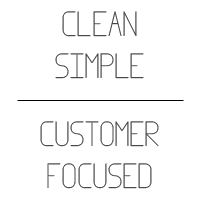SEO is important. Really important. It’s how you introduce yourself to new customers and establish yourself as a presence in your industry. I am not poo-pooing its importance in a marketing plan by any stretch of the imagination. However, SEO is not the only thing to take into account when designing and maintaining your website.
Let me give you an example. We were working with a client to update their outdated and off-brand Specials page. We batted around the idea of changing the page into a series of blog posts, adding more rich content about each individual special to feed search engines’ insatiable appetites. Then we stopped and took a step back and looked at how people are really using the page.
Currently, it’s not an entry or landing page for search engine traffic. Rather, after people have arrived at the site–via search engine traffic, direct traffic, email, social media, whatever–that’s their first click. They want to see prices and get concrete information on what deals are available. This page is all about at-a-glance shopping. People want to get a ballpark price and see how that compares to the other sites they’re looking at. They want to be able to get a quote without a lot of fuss. By having them wade through SEO-rich content, we might get more visitors to the page from search engines, but we would turn off the real customers because we made it harder to find the information they came to find.
 In the end, we decided to go with a bold, graphic look not dissimilar to an ad. It allows customers to see the current offerings quickly and doesn’t require a lot of reading. If they want more information, links are available to a blog post discussing all of the month’s specials. The page itself is uncluttered and free from any information that isn’t strictly Specials-related. Add in a “get a quote” form and call it a day.
In the end, we decided to go with a bold, graphic look not dissimilar to an ad. It allows customers to see the current offerings quickly and doesn’t require a lot of reading. If they want more information, links are available to a blog post discussing all of the month’s specials. The page itself is uncluttered and free from any information that isn’t strictly Specials-related. Add in a “get a quote” form and call it a day.
The moral of the story is that, yes you have to feed search engines, but that can’t be your only goal. If that is your only goal, not only will you turn off visitors with poor UX and not convert anyone (which is what you really want), you’ll also probably wind up with an over-optimized mess of a site that gets slapped down by the fist of an angry Google with some algorithmic update.
Focus on presenting information in the best way possible, no matter what that is. Keep things clean, keep things simple and always keep your customer in mind.
